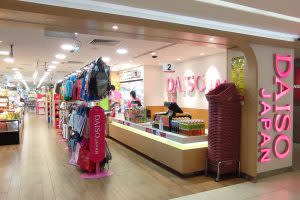Understanding The Math Behind Daiso’s Revised Pricing In Singapore

After crowds of Singaporeans rushed to fulfil their last $2 binge shopping before 1 May 2022, Daiso Singapore has settled into its new revised pricing.
For those unfamiliar with Daiso, it is a store that sells everything it carries at $2 previously. Thus, its slogan of “Always $2”. However, as of 1 May 2022, they raised their prices:

Source: Daiso Singapore Facebook page
Is Daiso’s Price Increase Due To GST Increase?
The initial notice of Daiso’s price increase states that “all prices will be exclusive of GST from 1st May 2022”. This suggests that Daiso’s price increase was due to the charging of GST. However, closer scrutiny may suggest otherwise.
As elaborated in our article on Daiso’s price increase and how companies should display GST, prices must be quoted, whether written or verbally, with GST already included. This is because “the public needs to know the final price they have to pay upfront”.
Prior to 1 May 2022, Daiso’s price already included GST and their GST-exclusive price was only $1.87. By charging GST separately, they automatically increased their prices by 7%. Thus, customers would have to fork out both the 7% increase in price of goods (from $1.87 to $2), and another 7% in GST ($0.14).

Previously $2. Now $4.07
Read Also: 12 Useful Items You Can Buy From Daiso To Keep Your Home More Pleasant And Productive
Daiso’s Origins As A 100-Yen Shop In Japan
One key draw of Daiso in Singapore is its cheap prices (“Always $2” previously) and wide variety of goods. Frequent travellers to Japan will also know of its origins as a 100-yen shop. Thus, no yen price tag items actually refer to 100-yen items.
Given that the current exchange rate between Japanese yen and Singapore dollar is 100 yen to S$1.07, shopping at Daiso in Singapore may not be as much as a bargain as we may think.
The same 100-yen item costs us $2.14 in Singapore compared to $1.07 in Japan (plane ticket not included).
Read Also: 7 Subtle Sales Techniques Don Don Donki Outlets In Singapore Use To Get You To Spend More
What Are The Best Value Items With Daiso’s New Pricing?
Perhaps, the most confusing part of Daiso’s price increase is that it is not consistent across the price tier. Why does an originally $2 item (or 100-yen equivalent) cost $2.14 but the 200-yen equivalent item cost $4.07 and not $4.28?

Why does the amber holographic glasses cost $2.14 but the clear holographic glasses cost $4.07?
If we apply consistent pricing across the price tiers, Daiso’s actual price is better value. Unfortunately, the most common price tiers (the 100-yen, 200-yen and 300-yen items) are the ones that offer the least value as higher-priced items offer more savings if the pricing was consistent.
Item Value in Yen | Actual Price in Singapore ($) | Consistent Pricing ($) | Difference ($) |
100 | 2.14 | 2.14 | 0.00 |
150 | 2.14 | 3.21 | 1.07 |
200 | 4.07 | 4.28 | 0.21 |
300 | 6.21 | 6.42 | 0.21 |
400 | 7.28 | 8.56 | 1.28 |
500 | 9.42 | 10.70 | 1.28 |
600 | 10.49 | 12.84 | 2.35 |
700 | 12.63 | 14.98 | 2.35 |
800 | 13.70 | 17.12 | 3.42 |
900 | 15.84 | 19.26 | 3.42 |
1000 | 16.91 | 21.40 | 4.49 |
1100 | 19.05 | 23.54 | 4.49 |
1200 | 20.12 | 25.68 | 5.56 |
1300 | 22.26 | 27.82 | 5.56 |
1400 | 23.33 | 29.96 | 6.63 |
1500 | 25.47 | 32.10 | 6.63 |
Note: consistent pricing assumes that every 100-yen is equivalent to $2.14.
Daiso In Japan Is A Much Better Bargain
Frequent travellers to Japan would probably already know this but Daiso in Japan offers much better value for the same product and more variety.
For the same 100-yen item, you would pay S$1.07 based on the current exchange rate. This price difference grows larger with every price tier (except for the 150-yen items). For the 1500-yen items, the difference is most stark, as it would only cost S$16.05 in Japan (after currency exchange), compared to $32.10 in Singapore.
Item Value in Yen | Actual Price in Singapore ($) | Price in Japan (after currency conversion) ($) | Difference ($) |
100 | 2.14 | 1.07 | 1.07 |
150 | 2.14 | 1.61 | 0.54 |
200 | 4.07 | 2.14 | 1.93 |
300 | 6.21 | 3.21 | 3.00 |
400 | 7.28 | 4.28 | 3.00 |
500 | 9.42 | 5.35 | 4.07 |
600 | 10.49 | 6.42 | 4.07 |
700 | 12.63 | 7.49 | 5.14 |
800 | 13.70 | 8.56 | 5.14 |
900 | 15.84 | 9.63 | 6.21 |
1000 | 16.91 | 10.70 | 6.21 |
1100 | 19.05 | 11.77 | 7.28 |
1200 | 20.12 | 12.84 | 7.28 |
1300 | 22.26 | 13.91 | 8.35 |
1400 | 23.33 | 14.98 | 8.35 |
1500 | 25.47 | 16.05 | 9.42 |
For those of us who aren’t travelling to Japan, we can also consider our neighbour, Malaysia. Daiso Malaysia offers its products at RM5.90 which works out to be $1.87 (based on the current exchange rate).
150-Yen Items Offer The Best Value
Based on this, it is better value for Singaporeans to stick to lower price tiers of 100-yen, 150-yen and 200-yen items as where the price difference doesn’t exceed $2 per item.

This is better value than the regular $2.14 items. Or is it?
The 150-yen price tier offers the best value for shoppers at Daiso Singapore as we pay only $2.14, the same price as the regular 100-yen items.
The post Understanding The Math Behind Daiso’s Revised Pricing In Singapore appeared first on DollarsAndSense.sg.

 Yahoo Finance
Yahoo Finance 